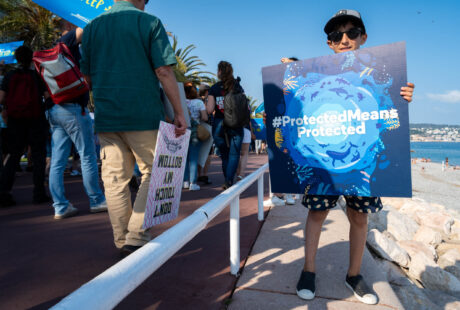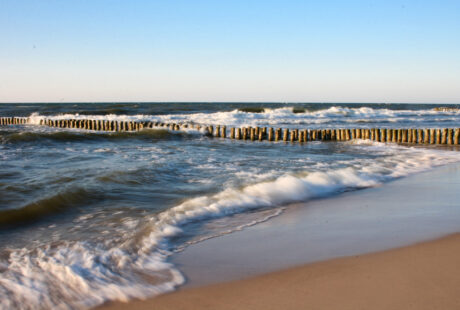After 5 years of negotiations within the EU institutions, the revised EU Fisheries Control Regulation has officially become law! This updated version represents a positive win for the ocean, fishers, fish populations, and climate.
This regulation is crucial for Member States to effectively control, implement and enforce the Common Fisheries Policy and its environmental aspects. Making sure that fishing activities are sustainably managed is key to ensure the future of coastal communities who depend on them, and help the majority of fishers who are already complying with the rules.
The revised rules help prevent overfishing and reduce the incidental catches of sensitive or threatened species. They introduce requirements such as the use of an electronic tracking system for all EU fishing vessels, the use of cameras on board to better monitor fishing operations, and the complete digitalisation of catch reporting for all vessels.
Gradually, all fishing vessels will need to be equipped with a monitoring system, which allows authorities to know exactly where any vessel is when fishing. This will prevent fishing vessels from operating in restricted areas where fishing activities are prohibited, often due to conservation reasons. This measure will contribute to reducing the number of illegal fishing activities taking place in EU waters, reducing overfishing and improving the protection of marine sensitive species.
Discarding unwanted catches is fully prohibited within the EU as of 2019. However, the lack of adequate fisheries control measures has led to challenges in enforcing this regulation. The introduction of new rules aims to establish a framework for reliable and effective monitoring, control, and enforcement of the so-called “landing obligation”. This obligation requires fishermen to adopt more selective fishing practices by keeping and landing all the unwanted catches. With the adoption of the revised Control regulation, a significant step is taken towards ensuring all catches, including unwanted catches, are duly and timely reported.
Within the next four years, all fishing vessels measuring at least 18 meters will be required to integrate a remote electronic monitoring tool, incorporating Closed Circuit Television, also known as video surveillance. This technology, known for its reliability and cost-effectiveness, plays a pivotal role in monitoring unwanted catches, in particular sensitive or threatened species. The installed cameras on these vessels can identify incidental catches, facilitating accurate accountability for bycaught species and preventing illegal discards at sea.
Furthermore, the legislation plans to eventually implement this monitoring tool to smaller vessels that run the risk of not complying with fisheries landing regulations.
In the coming months, the European Commission, in collaboration with the European Fisheries Control Agency, will define how to assess the “high risk of non-compliance” for smaller fishing vessels, taking into account the fishing season, the type of fishing gear employed, and the targeted fish species. Hopefully, this category will also include those vessels fishing seabass in the Bay of Biscay during the December to March period, as they are very likely to incidentally catch protected common dolphins. Over that small period of time, dolphins are caught by the thousands, putting at risk the wellbeing of their population. Having concrete evidence – and not just mere estimates – of the number of incidental catches of dolphins will put more pressure on national governments and the European Union to take a more proactive role in safeguarding this protected species. This will hopefully lead to the suspension of those targeted fisheries during that critical period, as recommended by scientists.
The revised regulation requires any data related to the catches to be electronically collected and reported, and this extends to any incidental catch of sensitive or threatened species. This technological advancement will not only simplify the enforcement by simplifying the current catch recording system, which is based on physical logbooks in paper, but it also represents a crucial step to ensuring the long-term sustainability of European fisheries. If used correctly, the data can improve the traceability of seafood, make population assessments more reliable, determine the conservation risk of protected species, and help with adaptive fisheries management. It ensures that the EU’s management decisions reflect the best available scientific advice. In particular, information on incidental catches of sensitive species can encourage the adoption of much needed mitigation measures to reduce bycatch of protected and sensitive species.
The revised Fisheries Control Regulation is a cornerstone to ensure efficient implementation of the Common Fisheries Policy, and to make sure that fishing activities are sustainably managed. This agreement comes at a time of great urgency, where marine biodiversity must be protected and our fisheries model needs to be rethought to make it fit for the future.
Posted on: 4 December 2023



